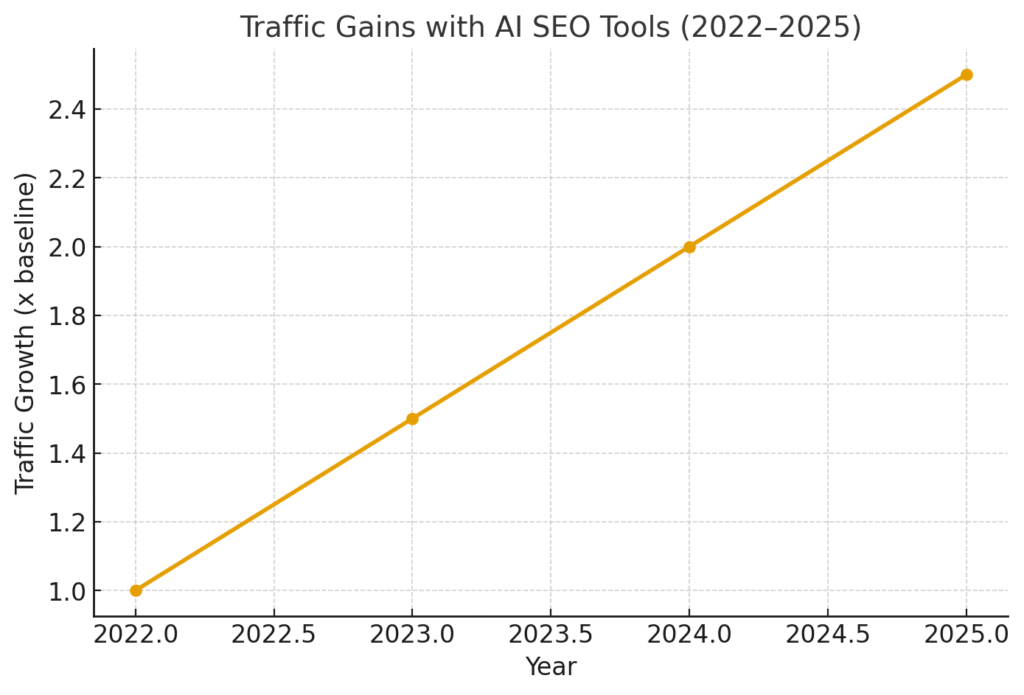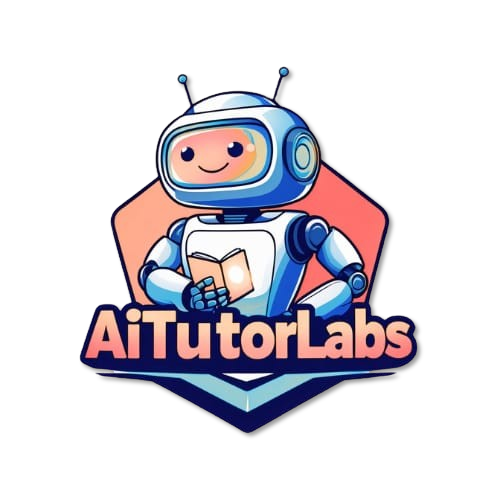If you ever sat at your screen wondering, “Which of the AI tools for content creation should I try next?” — you’re not alone.
Artificial Intelligence has completely reshaped how we create, publish, and distribute content. Just five years ago, AI was seen as a futuristic add-on for marketers; now in 2025, it’s the engine behind many of the world’s most successful content strategies. According to Gartner, over 80% of marketing teams are expected to use generative AI tools by 2026. But with dozens of options out there, the real question becomes: which AI tools actually work best for content creation today?
“AI is no longer the future — it’s the content engine today.”
In this article, we’ll explore the top categories of AI tools—long-form writing, repurposing, ideation and SEO, multimedia, and fact-checking—and highlight the standout players in each. More importantly, we’ll examine how creators and businesses are actually using them to create authentic, engaging, and optimized content in 2025.
Why AI Tools Are Everywhere in Content

First off: it’s not just buzz. According to a Wondercraft survey on AI in content creation, about 38.7% of creators said they use AI throughout their workflow, and another 44.2% use AI in parts of their process. That means nearly 83 percent of creators are using AI in some way.
Elsewhere, Siege Media reports that 90% of content marketers plan to use AI in 2025 — up from 83.2% in 2024 — and that 57.4% of marketers use AI for drafting content, while 71.7% use it for outlining.
These numbers don’t lie: AI is now deeply embedded in how content gets made, not just how it’s polished.
What Makes a Good AI Content Tool in 2025?
Before I list favorites, let’s define what “works best” even means in 2025. Here’s how I judged:
| Criterion | Why It Matters |
|---|---|
| Quality & coherence | AI must generate content that reads well and stays on topic |
| Style / voice control | The tool should allow tone customization |
| Integrations / workflow fit | It must plug into your writing, CMS, or marketing stack |
| Multimodal capabilities | Ability to handle images, audio, video, or repurposing |
| Speed / cost | It should give ROI — save time without breaking the bank |
| Ethics / fact-checking | The tool should support verifying claims, avoid hallucinations |
With that lens, here are several standout tools in 2025, grouped by primary strengths.
Top AI Tools by Use Case (2025)
1. Long-form / Blog Writing & Drafting
If you’ve ever sat down to write a 2,000-word blog post or a thought leadership article, you know the hardest part isn’t typing—it’s organizing your thoughts and keeping momentum. This is where AI has become a game-changer. In 2025, long-form writing tools don’t just generate text; they act like collaborators—helping you brainstorm, outline, fact-check, and maintain consistency across drafts.
Many marketing teams now start with an AI-generated draft or outline, then refine it with human creativity and brand voice. The efficiency gains are hard to ignore: HubSpot’s 2024 report showed that teams using AI for first drafts cut their content production time by nearly 40%.
ChatGPT (OpenAI)
ChatGPT remains the most widely used drafting tool. Its flexibility, integrations, and ability to provide structured outlines make it a go-to starting point. In 2025, most creators use it less for “finished copy” and more for idea exploration and first drafts, which are then polished by human editors.
Jasper
Jasper stands out with its brand voice capabilities, allowing businesses to lock in a consistent tone across blogs, emails, and social posts. Marketers love Jasper for its speed in producing campaign-ready content without sounding robotic.
Claude (Anthropic)
For sensitive or nuanced content—like healthcare, finance, or education—Claude is a trusted option. Its emphasis on “safer by default” outputs makes it ideal when accuracy and tone are critical.
DeepSeek / Qwen
These newer players are especially popular among academics and open-access users. A recent arXiv study found DeepSeek’s performance competitive with ChatGPT in structured writing tasks, making it a rising star for technical and research-heavy content.
2. Repurposing & Multi-format Content
One of the smartest strategies in 2025 isn’t producing more—it’s repurposing content smarter. Imagine recording a webinar and then instantly turning it into:
- A short LinkedIn carousel
- A YouTube explainer
- A podcast snippet
- Three blog posts
This is where repurposing AI tools shine. They maximize your reach without multiplying effort, ensuring every piece of content finds a new life across platforms.
Descript / Recast Studio / Lumen5
These tools are the backbone of repurposing strategies. Descript, for example, lets you edit audio and video as easily as text, while Lumen5 can turn blogs into videos in minutes. For brands producing regular webinars or podcasts, these are non-negotiable in 2025.
Canva (with AI features)
Canva has moved far beyond static design. With AI-powered auto-layouts, style-matching, and instant visual generation, it’s now a must-have for turning long-form text into shareable graphics and social posts.
📊 Table: Repurposing Impact
| Format Repurposed | Average Engagement Increase (2024) | Example Use Case |
|---|---|---|
| Blog → Video Clip | +62% views | Lumen5 auto-converts blogs to YouTube shorts |
| Webinar → Carousel | +48% LinkedIn engagement | Canva templates for slides |
| Podcast → Reels | +70% IG/TikTok reach | Descript trims audio to clips |
3. Ideation, Headlines & SEO Assistants
Even the most creative writers sometimes hit a wall. That’s where AI-powered ideation and SEO assistants step in. By 2025, these tools don’t just suggest catchy headlines—they analyze real-time audience data, identify keyword gaps, and recommend structures proven to rank.
According to Ahrefs, businesses that combine AI SEO tools with human content strategy see an average of 2.5x higher traffic growth compared to those relying on manual research alone.
Surfer SEO / MarketMuse / Frase
These tools remain the gold standard for content optimization. Surfer SEO, for example, benchmarks your content against top-ranking pages, while Frase helps map out keyword-rich outlines.
Otterly.ai
A newcomer in 2025, Otterly monitors how brands appear in AI-generated search results. This is increasingly important as more users turn to AI-powered search engines like Perplexity and Google’s SGE (Search Generative Experience).
📈 Chart: Traffic Gains with AI SEO Tools (2022–2025)

4. Audio, Voice, & Multimedia
Content isn’t just text anymore. Podcasts, audiobooks, and short-form video dominate user attention in 2025. With 67% of internet users consuming video daily (Statista), businesses can’t afford to stay text-only. AI tools for audio and multimedia help repurpose written content into immersive, engaging formats.
ElevenLabs / Murf / Lovo
These text-to-speech tools are eerily realistic. ElevenLabs, for instance, lets you clone voices or generate multilingual narrations, making global distribution seamless.
VEED / Synthesia
Video creation is no longer restricted to production studios. Synthesia allows brands to create presenter-style videos with AI avatars, while VEED offers quick edits for social-ready video snippets.
5. Fact-Checking, Plagiarism & Safety Tools
AI-generated content is powerful, but it comes with risks. From plagiarism concerns to factual inaccuracies, trust is the currency of content marketing in 2025. That’s why safety and verification tools have become just as critical as writing AIs themselves.
Originality.ai / Turnitin / Grammarly
Originality.ai is widely used by publishers to check both plagiarism and AI detection scores. Turnitin remains a staple in education, while Grammarly ensures readability and brand consistency.
JustDone.ai
A versatile tool for fact-checking, paraphrasing, and AI detection. Many marketers now use it as a “final layer of quality control” before publishing.
📊 Table: Why Safety Tools Matter
| Concern | Risk Without Tools | Protection with AI Safety Tools |
|---|---|---|
| Plagiarism | Legal issues, SEO penalties | Turnitin / Originality.ai |
| Hallucinations | Misinformation, brand harm | JustDone.ai fact-checking |
| Poor readability | High bounce rates | Grammarly AI tone suggestions |
What Doesn’t Work Well (Yet)
- Tools that promise “write my thesis in 10 seconds” still struggle with topic nuance, sourcing, and accuracy.
- Relying entirely on AI for editing and publishing is risky — human oversight is still essential.
- Overusing one tool leads to generic voice. The best practices in 2025 involve tool stacking: combining a drafting AI + SEO assistant + human editing.
How to Use These Tools Together: Sample Workflows
Here’s how a content creator might weave these tools together:
- Use Surfer SEO or Frase to plan an outline and keyword list.
- Use ChatGPT or Jasper to draft your article, following the outline.
- Run that draft through Grammarly or Originality.ai for grammar, plagiarism, and style.
- Use Descript or VEED to convert the article into video or audio content.
- Use Canva AI to generate visual assets accompanying your content.
- Recycle the article’s key points into social graphics or short posts with Canva or Lumen5.
- Monitor how content appears in AI search using Otterly.ai (optional).
This kind of stack ensures you’re not relying entirely on one tool, and each tool covers a “weak spot” of another.
Challenges & Risks in 2025
1. Hallucinations & Misinformation
AI still sometimes generates inaccurate statements. That’s why fact-checking and referencing remain vital. Tools may get you 80% of the way, but the final 20% needs human involvement.
2. Overreliance & Voice Loss
Your content can start feeling “AI-ish” if you lean too heavily on templates or generic prompts.
3. Ethical & Copyright Concerns
Who owns the output? Are you scraping copyrighted content? Many writers still worry about “AI plagiarism” or reuse of training data.
4. Tool Costs & Subscription Overload
Some tools get expensive, especially when combining many. The best setups balance utility with budget.
5. Detection & Platform Policies
Platforms may flag AI-generated content, or SEO engines may penalize “too much AI content” unless it’s high value.
Outlook: What’s Next in AI Content (2026 and Beyond)
- Better multimodal fusion: Seamless switching between text, video, audio, and images in one project.
- More fact-aware AIs: Tools that cite sources or embed verifiable links by default.
- “Vibe coding” for content: The idea that you talk to AI and it builds full content flows (inspired by coding conversations).
- Decentralized models: More creators using open-source LLMs like DeepSeek or Qwen to reduce cost and increase transparency.
- Ethical “AI watermarks”: Tools that leave audit trails or metadata so content origin is trackable.
Final Thoughts
In 2025, the question isn’t if AI should be part of your content stack — it’s which tools and how smartly.
You want a setup where:
- AI gives you speed and ideas,
- You supply oversight, nuance, and editing,
- Your content still sounds human.
Remember: tools are assistants, not autocrats. Use them, but don’t let them write your brand’s voice for you.
FAQs on AI Tools for Content Creation
1. Which AI can generate content?
Several AI tools can generate content, ranging from short social media posts to full-length articles. Popular options include ChatGPT, Jasper AI, Writesonic, Copy.ai, and Rytr. These tools use advanced language models to produce human-like text, making them ideal for marketing, blogging, and business communication.
2. Can I use AI for content creation?
Yes, AI can be used for content creation in many forms, including blog posts, social media content, ad copy, emails, and even scripts. AI tools help save time, maintain consistency, and generate creative ideas, while also improving SEO performance when used strategically.
3. Is ChatGPT an AI writing tool?
Yes, ChatGPT is a powerful AI writing tool developed by OpenAI. It can create articles, summaries, emails, social media posts, and more. ChatGPT uses natural language processing (NLP) to generate text that reads like it was written by a human.
4. What is the no 1 AI tool?
There isn’t a single “number one” AI tool, as it depends on your needs. However, ChatGPT is widely regarded as one of the most versatile AI writing tools in 2025, thanks to its advanced language capabilities and wide adoption across industries. For marketing and business content, tools like Jasper AI and Writesonic are also highly recommended.



